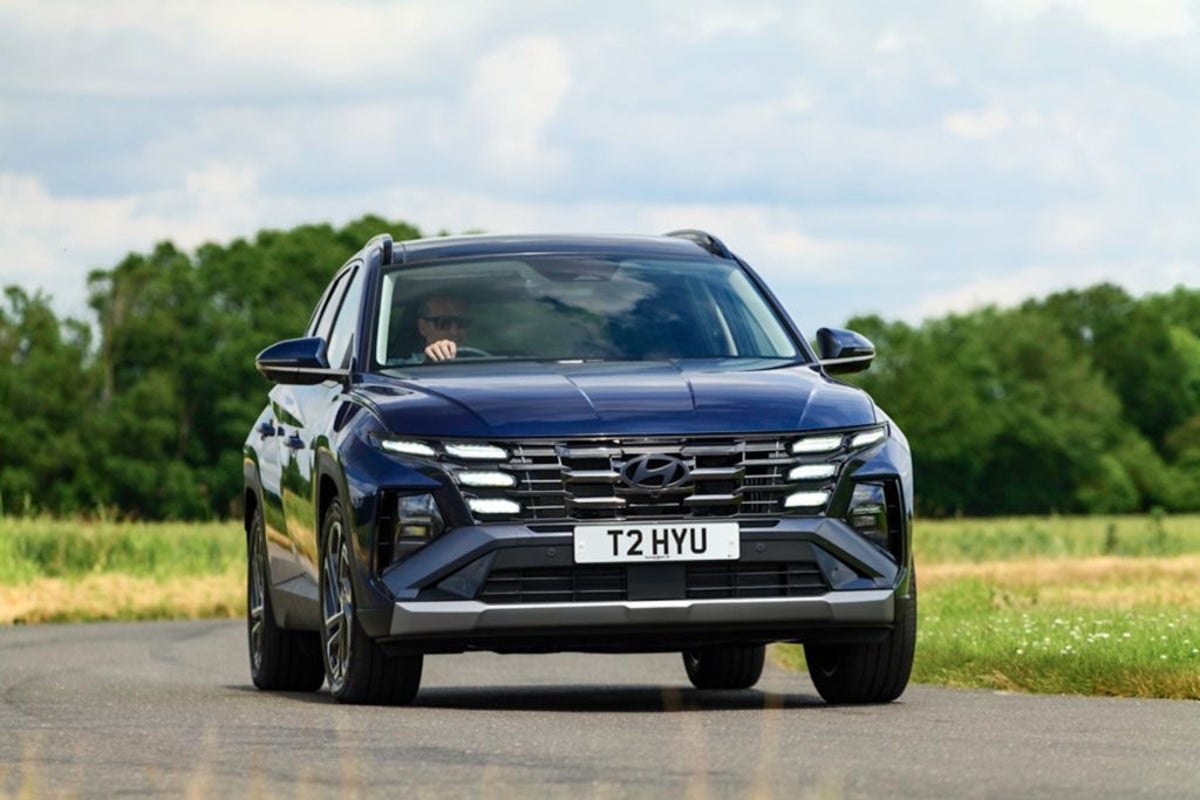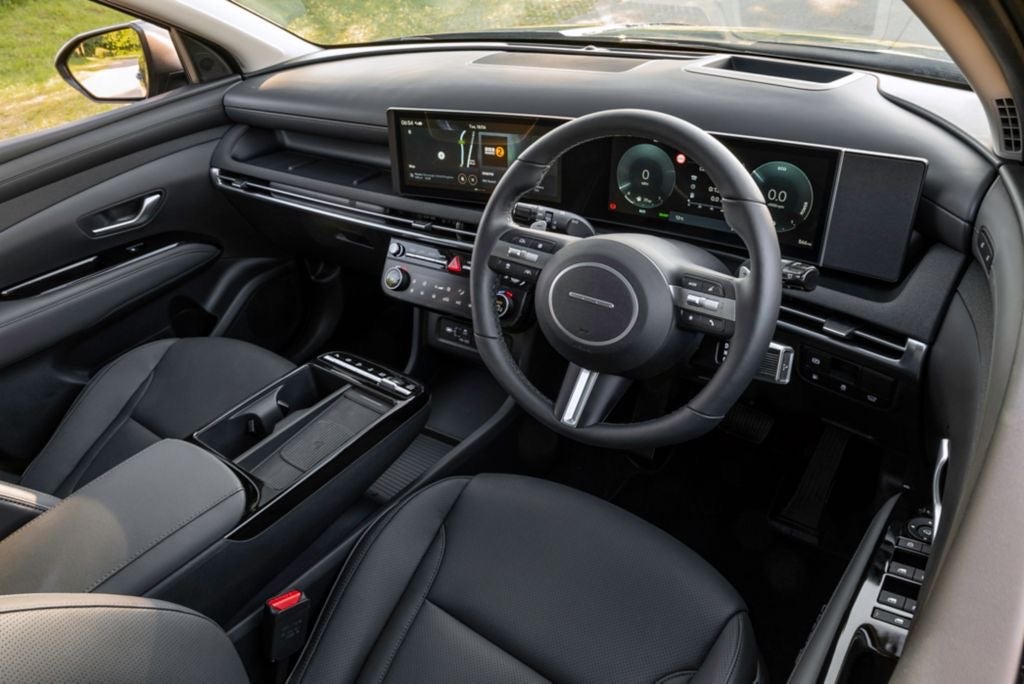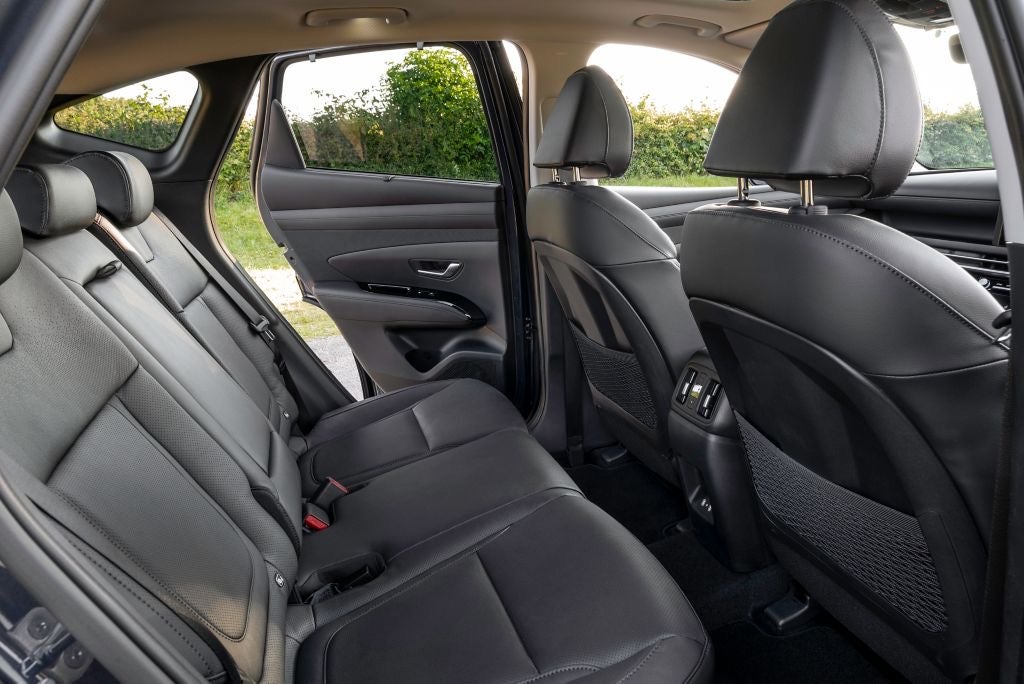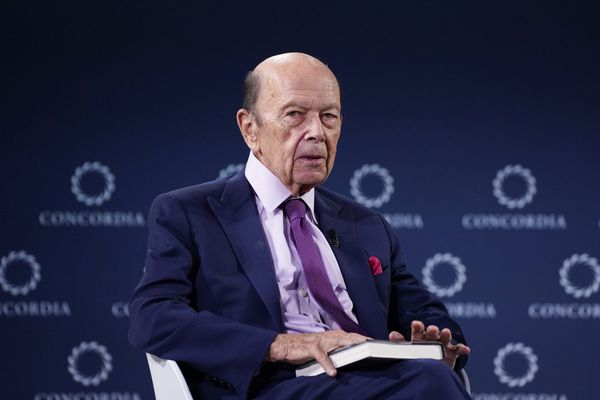
So here I am again at the wheel of another plug-in hybrid SUV automobile and I may well wonder “well, how did I get here?” Unlike the Talking Heads’ whimsical answers to their famous existential question, the answer to my conundrum is, first, the Hyundai press office and, second and third, fashion and fiscal incentives. I know what I’m doing, you know.
We’re talking specifically here about a Hyundai Tucson Ultimate 1.6 plug-in hybrid with a six-speed automatic gearbox and four-wheel drive. It’s a fine but flawed car. The finery is immediately apparent. Although the model has been around for about five years now, it’s recently been treated to what the car trade terms a “refresh” and used to be known as a facelift, which sounded a bit too disparaging and, well, honest.
It’s the fourth generation of a car that’s been steadily growing in stature, in both senses, and popularity over the past two decades ago, and is now a top 10 seller in the UK, just ahead of the Mini Cooper and not far behind the Peugeot 2008 and its highly capable rival, the Nissan Qashqai. In fact, they’ve made seven million in all since 2004, which, albeit in a quiet and understated manner, speaks for itself.

I can’t say I’m surprised. The quality feels pretty good, approaching “premium” standards, and, being a product of South Korean origins (and also built in the Czech Republic), this revised version has excellent electronics – a wide touchscreen that runs about halfway across the dash, advanced infotainment system, voice recognition controls, head-up display, full connectivity, “over the air” software updates, and its very own app.
Apparently, there’s also “Crosswind Stability Control”, which works against strong winds when driving at high speeds by “applying partial braking and steering torque control to improve driving stability”. If it was at work, it was so unobtrusive that I didn’t notice it kicking in. Anyway, sounds like a good idea.
True, most of these aren’t exotic fitments these days, but they’re executed well and work intuitively. As ever, I judge a car by the quality of the steering wheel controls, not least the adaptive cruise control, and the Tucson is a match for any of its many, many competitors in this overcrowded market sector. The seats have been redesigned and I can testify that they’re supportive on a long motorway run. The air con controls are immediately accessible via conventional dials rather than multiple touchscreen menus, which is safer as well as more convenient.
The Spec
Hyundai Tucson Ultimate 1.6T Plug-in Hybrid
Price: £46,475 (as tested, range starts at £32,000)
Engine capacity: 1.6l-petrol, 4-cyl + 88kWh battery, 6sp-auto 4WD
Power output (PS): 253
Top speed (mph): 116
0 to 60 (seconds): 8.2
Fuel economy (mpg): 217.3
CO2 emissions (WLTP, g/km): 29
So far, so contemporary and fashionable, then, and the edgy looks, diamond-black grille and stacked headlights have all been slightly updated in line with consumer tastes. Because of the distinctive pattern of the running lights the Tucson feels a little less generic than some of its peers, but, in all frankness, it’s sometimes hard to tell these “crossover” SUV/hatch designs apart, and, as someone who’s had experience in most of them, they can be formulaic and samey. Not bad, you understand, and incomparably better value than anything that’s gone before; not just not so… interesting as they might be.
The same goes for the drivetrain, particularly in the case of the plug-in hybrid version placed at my disposal. These are indeed popular right now, partly because people sometimes consider them “green” or a halfway step to a full battery-powered SUV.

You do plug them in, after all, and you can get about 40 miles on a full charge (mostly from the mains, but a little self-generated through the petrol/electric regenerative system). The problem, as with all plug-in hybrids, is that this leaves your Tucson neither one thing nor t’other, and even the worst of both worlds. If they’re not used as intended, and rarely or never plugged in, then they’re just a petrol car lugging around a heavy battery pack, and with actually inferior performance, fuel economy and luggage space to boot, so to speak. If they’re religiously charged and used for lots of EV use, well, why not run a pure battery electric vehicle instead?
The Hyundai people like to hedge their bets in these technically uncertain times, and they’ll also happily sell you a petrol, (non plug-in) hybrid, and, though not yet a fully battery-powered Tucson, some with a choice of two or four wheel drive, and in a range of trim levels. If you want an electric family Hyundai, there’s the smaller Kona, the futuristic Ioniq 5 and the rarer retro-styled Ioniq 6 to choose from – all highly competitive.
The main reason for opting for this plug-in hybrid job is that company car users enjoy a considerable tax break on the benefit-in-kind, based on some optimistic assumptions about people being bothered to plug them in.
The Tucson plug-in hybrid is firmly at the conjunction of fiscally sound, fashionable family motoring. However, like all the rest, and through no fault of its own, the concept is a little but flawed.







